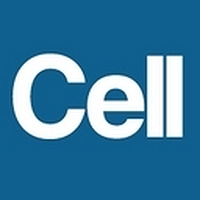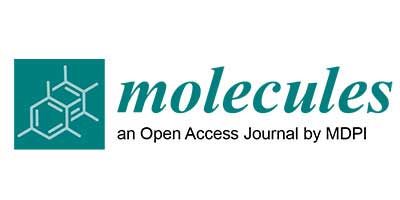 “Several natural compounds have demonstrated potential for the treatment of central nervous system disorders such as ischemic cerebrovascular disease, glioblastoma, neuropathic pain, neurodegenerative diseases, multiple sclerosis and migraine.
“Several natural compounds have demonstrated potential for the treatment of central nervous system disorders such as ischemic cerebrovascular disease, glioblastoma, neuropathic pain, neurodegenerative diseases, multiple sclerosis and migraine.
This is due to their well-known antioxidant, anti-inflammatory, neuroprotective, anti-tumor, anti-ischemic and analgesic properties. Nevertheless, many of these molecules have poor aqueous solubility, low bioavailability and extensive gastrointestinal and/or hepatic first-pass metabolism, leading to a quick elimination as well as low serum and tissue concentrations.
Thus, the intranasal route emerged as a viable alternative to oral or parenteral administration, by enabling a direct transport into the brain through the olfactory and trigeminal nerves. With this approach, the blood-brain barrier is circumvented and peripheral exposure is reduced, thereby minimizing possible adverse effects.
OBJECTIVE:
Herein, brain-targeting strategies for the nose-to-brain delivery of natural compounds, including flavonoids, cannabinoids, essential oils and terpenes, will be reviewed and discussed. Brain and plasma pharmacokinetics of these molecules will be analyzed and related to their physicochemical characteristics and formulation properties.
CONCLUSION:
Natural compounds constitute relevant alternatives for the treatment of brain diseases but often require loading into nanocarrier systems to reach the central nervous system in sufficient concentrations. Future challenges lie in a deeper characterization of their therapeutic mechanisms and in the development of effective, safe and brain-targeted delivery systems for their intranasal administration.”
https://www.ncbi.nlm.nih.gov/pubmed/31939728
http://www.eurekaselect.com/178321/article
 “Activation of cannabinoid receptor type II (CB2R) by AM1241 has been demonstrated to protect dopaminergic neurons in Parkinson’s disease (PD) animals.
“Activation of cannabinoid receptor type II (CB2R) by AM1241 has been demonstrated to protect dopaminergic neurons in Parkinson’s disease (PD) animals.
 “Drugs selectively targeting CB2 hold promise for treating neurodegenerative disorders, inflammation, and pain while avoiding psychotropic side effects mediated by CB1. The mechanisms underlying CB2 activation and signaling are poorly understood but critical for drug design. Here we report the cryo-EM structure of the human CB2-Gi signaling complex bound to the agonist WIN 55,212-2. The 3D structure reveals the binding mode of WIN 55,212-2 and structural determinants for distinguishing CB2 agonists from antagonists, which are supported by a pair of rationally designed agonist and antagonist. Further structural analyses with computational docking results uncover the differences between CB2 and CB1 in receptor activation, ligand recognition, and Gi coupling. These findings are expected to facilitate rational structure-based discovery of drugs targeting the
“Drugs selectively targeting CB2 hold promise for treating neurodegenerative disorders, inflammation, and pain while avoiding psychotropic side effects mediated by CB1. The mechanisms underlying CB2 activation and signaling are poorly understood but critical for drug design. Here we report the cryo-EM structure of the human CB2-Gi signaling complex bound to the agonist WIN 55,212-2. The 3D structure reveals the binding mode of WIN 55,212-2 and structural determinants for distinguishing CB2 agonists from antagonists, which are supported by a pair of rationally designed agonist and antagonist. Further structural analyses with computational docking results uncover the differences between CB2 and CB1 in receptor activation, ligand recognition, and Gi coupling. These findings are expected to facilitate rational structure-based discovery of drugs targeting the  “Abnormal
“Abnormal  “Parkinson’s disease is a neurodegenerative disorder, the motor symptoms of which are associated classically with Lewy body formation and nigrostriatal degeneration.
“Parkinson’s disease is a neurodegenerative disorder, the motor symptoms of which are associated classically with Lewy body formation and nigrostriatal degeneration.
 “Several natural compounds have demonstrated potential for the treatment of central nervous system disorders such as ischemic cerebrovascular disease, glioblastoma, neuropathic pain, neurodegenerative diseases, multiple sclerosis and migraine.
“Several natural compounds have demonstrated potential for the treatment of central nervous system disorders such as ischemic cerebrovascular disease, glioblastoma, neuropathic pain, neurodegenerative diseases, multiple sclerosis and migraine. “Alzheimer’s disease (AD), the leading cause of dementia in the elderly, is a neurodegenerative disorder marked by progressive impairment of cognitive ability. Patients with AD display neuropathological lesions including senile plaques, neurofibrillary tangles, and neuronal loss.
“Alzheimer’s disease (AD), the leading cause of dementia in the elderly, is a neurodegenerative disorder marked by progressive impairment of cognitive ability. Patients with AD display neuropathological lesions including senile plaques, neurofibrillary tangles, and neuronal loss. “Pantothenate kinase-associated neurodegeneration is characterized by severe, progressive dystonia. This study aims to describe the reported usage of cannabis products among children with pantothenate kinase-associated neurodegeneration.
“Pantothenate kinase-associated neurodegeneration is characterized by severe, progressive dystonia. This study aims to describe the reported usage of cannabis products among children with pantothenate kinase-associated neurodegeneration. “Chronic cerebral hypoperfusion (CCH) is a major contributor to cognitive decline and degenerative processes leading to Alzheimer’s disease, vascular dementia, and aging. However, the delicate mechanism of CCH-induced neuronal damage, and therefore proper treatment, remains unclear.
“Chronic cerebral hypoperfusion (CCH) is a major contributor to cognitive decline and degenerative processes leading to Alzheimer’s disease, vascular dementia, and aging. However, the delicate mechanism of CCH-induced neuronal damage, and therefore proper treatment, remains unclear. “Delayed neurologic sequelae (DNS) are among the most serious complications of carbon monoxide (CO) poisoning caused partly by elevated neuroinflammation.
“Delayed neurologic sequelae (DNS) are among the most serious complications of carbon monoxide (CO) poisoning caused partly by elevated neuroinflammation.